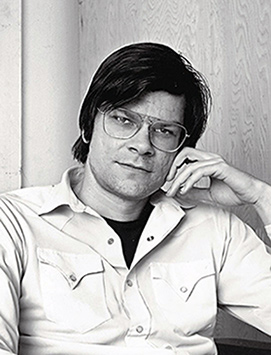
Robert Smithson was an American artist known for sculpture and land art who often used drawing and photography in relation to the spatial arts. His work has been internationally exhibited in galleries and museums and is held in public collections. He was one of the founders of the land art movement whose best known work is the Spiral Jetty (1970).

Outsider art is art made by self-taught individuals who are untrained and untutored in the traditional arts with typically little or no contact with the conventions of the art worlds.

Abstract art uses visual language of shape, form, color and line to create a composition which may exist with a degree of independence from visual references in the world.

A telephoto lens, also known as telelens, is a specific type of a long-focus lens used in photography and cinematography, in which the physical length of the lens is shorter than the focal length. This is achieved by incorporating a special lens group known as a telephoto group that extends the light path to create a long-focus lens in a much shorter overall design. The angle of view and other effects of long-focus lenses are the same for telephoto lenses of the same specified focal length. Long-focal-length lenses are often informally referred to as telephoto lenses, although this is technically incorrect: a telephoto lens specifically incorporates the telephoto group.

Alex Grey is an American visual artist, author, teacher, and Vajrayana practitioner known for creating spiritual and psychedelic artwork such as his 21-painting Sacred Mirrors series. He works in multiple forms including performance art, process art, installation art, sculpture, visionary art, and painting. He is also on the board of advisors for the Center for Cognitive Liberty and Ethics, and is the Chair of Wisdom University's Sacred Art Department. He and his wife Allyson Grey are the co-founders of The Chapel of Sacred Mirrors (CoSM), a non-profit organization in Wappingers Falls, New York.
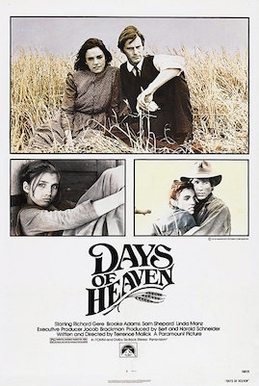
Days of Heaven is a 1978 American romantic period drama film written and directed by Terrence Malick, and starring Richard Gere, Brooke Adams, Sam Shepard and Linda Manz. Set in 1916, it tells the story of Bill and Abby, lovers who travel to the Texas Panhandle to harvest crops for a wealthy farmer. Bill persuades Abby to claim the fortune of the dying farmer by tricking him into a false marriage.
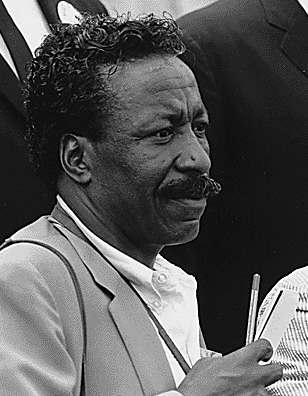
Gordon Roger Alexander Buchanan Parks was an American photographer, composer, author, poet, and film director, who became prominent in U.S. documentary photojournalism in the 1940s through 1970s—particularly in issues of civil rights, poverty and African Americans—and in glamour photography. He is best remembered for his iconic photos of poor Americans during the 1940s, for his photographic essays for Life magazine, and as the director of the films Shaft, Shaft's Big Score and the semiautobiographical The Learning Tree.
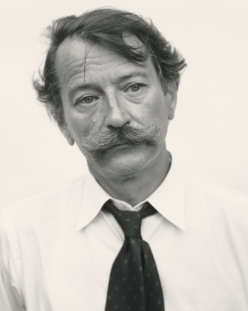
Thaddeus John Szarkowski was an American photographer, curator, historian, and critic. From 1962 to 1991 Szarkowski was the director of photography at New York's Museum of Modern Art (MoMA).

Fine-art photography is photography created in line with the vision of the photographer as artist, using photography as a medium for creative expression. The goal of fine-art photography is to express an idea, a message, or an emotion. This stands in contrast to representational photography, such as photojournalism, which provides a documentary visual account of specific subjects and events, literally representing objective reality rather than the subjective intent of the photographer; and commercial photography, the primary focus of which is to advertise products or services.

Michael Benson is an American author, artist, filmmaker, and exhibitions producer whose most recent work centers on the convergence of art and science. In the last fifteen years Benson has produced a series of large-scale exhibitions of digitally constructed planetary landscapes in major international museums. His most recent book, Space Odyssey, is a detailed nonfiction examination of the production of Stanley Kubrick's 2001: A Space Odyssey. The book's publication was timed to coicide with the 50th anniversary of the film's theatrical release. Benson has written for The New York Times, The Washington Post, The New Yorker, The Atlantic, and Rolling Stone. He is currently using scanning electron microscope technologies at the Canadian Museum of Nature in Ottawa to view and photograph natural objects for a book and exhibition project titled Nanocosmos. He is a Fellow of the New York Institute of the Humanities, a Weizmann Institute Advocate for Curiosity, and was recently a Visiting Scholar at the Center for Bits and Atoms at the MIT Media Lab.

White Mountain art is the body of work created during the 19th century by over four hundred artists who painted landscape scenes of the White Mountains of New Hampshire in order to promote the region and, consequently, sell their works of art.

Karl Struss, A.S.C. was an American photographer and a cinematographer of the 1900s through the 1950s. He was also one of the earliest pioneers of 3-D films. While he mostly worked on films, such as F.W. Murnau's Sunrise: A Song of Two Humans and Charlie Chaplin's The Great Dictator and Limelight, he was also one of the cinematographers for the television series Broken Arrow and photographed 19 episodes of My Friend Flicka.

Edward Burtynsky is a Canadian photographer and artist known for his large format photographs of industrial landscapes. His works depict locations from around the world that represent the increasing development of industrialization and its impacts on nature and the human existence. It is most often connected to the philosophical concept of the sublime, a trait established by the grand scale of the work he creates, though they are equally disturbing in the way they reveal the context of rapid industrialization.

Trevor Paglen is an American artist, geographer, and author whose work tackles mass surveillance and data collection.

Life with Father is a 1947 American Technicolor comedy film adapted from the 1939 play of the same name, which was inspired by the autobiography of stockbroker and The New Yorker essayist Clarence Day.
Martin Harrison is a British art historian, author and curator, noted for his work on photography, on the medium of stained glass and its history, and as an authority on the work of the painter Francis Bacon.
Non-narrative film is an aesthetic of cinematic film that does not narrate, or relate "an event, whether real or imaginary". It is usually a form of art film or experimental film, not made for mass entertainment.
Eileen Quinlan is a self-described still-life photographer who shoots with medium format and large format cameras. An art critic for Art in America likened her style to that of Moholy-Nagy and James Welling.
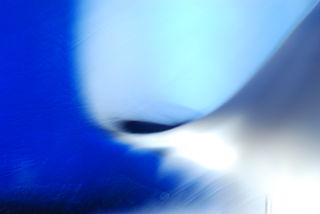
Abstract photography, sometimes called non-objective, experimental or conceptual photography, is a means of depicting a visual image that does not have an immediate association with the object world and that has been created through the use of photographic equipment, processes or materials. An abstract photograph may isolate a fragment of a natural scene to remove its inherent context from the viewer, it may be purposely staged to create a seemingly unreal appearance from real objects, or it may involve the use of color, light, shadow, texture, shape and/or form to convey a feeling, sensation or impression. The image may be produced using traditional photographic equipment like a camera, darkroom or computer, or it may be created without using a camera by directly manipulating film, paper or other photographic media, including digital presentations.
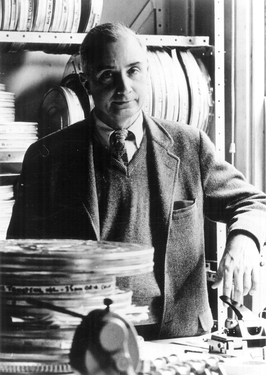
E. Francis Thompson was an American director, producer, and writer known for his multi-screen and giant-screen filmography.

















